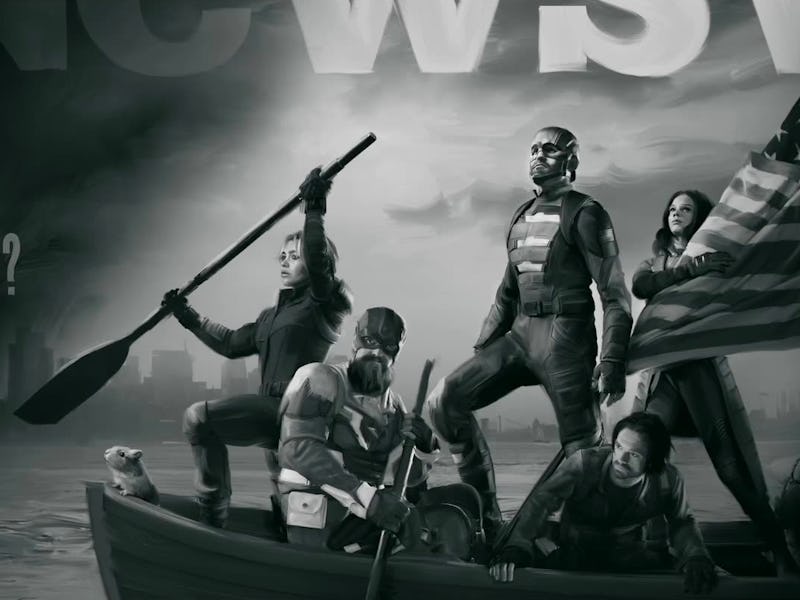The Story Behind Thunderbolts’ Shocking End Credits Sequence
How the movie’s final moments changed from guinea pigs to political cartoons.

Over more than a dozen years, Marvel has proven that the story doesn’t end when the credits roll — there’s always a post-credits scene teasing something new. But with Thunderbolts*, Marvel proved that credits aren’t something you sit through to get to the teaser; they can be an extension of the story itself.
End titles, the illustrated sequences showing the stars before the main end credits, are usually full of striking images and symbolism, but Thunderbolts* took them one step farther. Hot on the heels of the reveal that the asterisk after “Thunderbolts” was because the team was truly called the New Avengers, the end titles expand on how America reacted to this unlikely super squad through fictional headlines and magazine covers in the months after.
But these titles didn’t always look ripped from the headlines. Inverse spoke to Ronnie Koff, Creative Director of Imaginary Forces, about how he created these titles, how a sudden shift in direction changed the vision, and an Easter egg you might not have noticed.
Now Thunderbolts* is now available for digital purchase, you can check out the full sequence below.
In Thunderbolts*, the end credits serve as a sort of epilogue, showing the press reaction to The New Avengers and revealing the new title of the movie. However, Koff reveals that the original pitch was much different.
“Originally, we pitched a concept that Jake [Schreier], the director, was really interested in, of having a guinea pig running through this maze, which had all these shame rooms in it,” Koff says. This would blend the two bookends of the movie, Yelena’s destruction of a lab and the threat of the Void, in one whimsical sequence.
So what changed? As it goes in blockbuster moviemaking, it all came down to testing. “The audience didn't quite know how to respond after they announced that they're the New Avengers now,” Koff reveals. These end titles would be the first thing fans see after the big New Avengers reveal, so it would be the perfect time to explain that they weren’t alone — nobody really knew what to make of it. “They want to use that real estate in the film to give an understanding to the audience of what this means to be the New Avengers, to reflect back some of the cynicism that they might have, but also express that maybe this could be a good thing.”
With a brand new direction, Koff went about diving into how he could create realistic headlines that could exist in the MCU. “Immediately I went to satire, political cartoon, the New Yorker, just publications that can skewer or could lionize. They can really present a point of view in a powerful way,” Koff said.
Through these political cartoons and covers, Koff and his team snuck in all kinds of cultural symbols and references: There’s Red Guardian as King Kong, John Walker as Don Quixote, even the whole team as Queen on the cover of Rolling Stone.
John Walker’s bent shield becomes a Don Quixote-esque steed in the Thunderbolts* end credits.
Originally, there we even more of these, but some were left on the cutting room floor. “I made this one image of five babies dressed up as the New Avengers. I thought it was so good with the headline, ‘Can They Lead?’ I think it was for a New Yorker cover that we wanted to put in there, and they loved it,” Koff said. Unfortunately, that was one step too far, metaphor-wise. “I think there was some confusion. Is this going to be like the Baby Avengers or something?”
Thunderbolts* proves that end titles don’t have to just be slick visuals and interesting illustrations: they can provide as much exposition and lore as the post-credits scene that follows them. The final product turned out a lot different than the original pitch, but that didn’t stop Koff from slipping in one little reference to that first draft.
“The guinea pig is in there,” he reveals. “He's in the little boat at the end.”